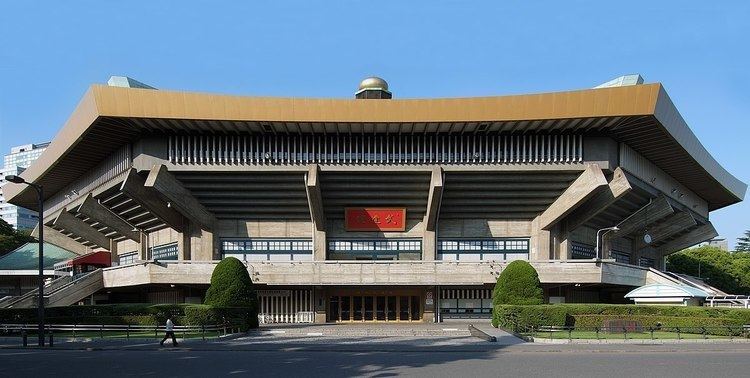 | ||
The National Memorial Service for War Dead (全国戦没者追悼式, Zenkoku Senbotsusha Tsuitōshiki') is an official, secular ceremony held by the Japanese government on August 15 in the Nippon Budokan in Tokyo, Japan to honor victims of World War II. The first such memorial service was held on May 2, 1952.
Contents
Shūsen-kinenbi
Shūsen-kinenbi (Japanese: 終戦記念日, lit. "end-of-war memorial day"), also written as shūsen no hi (Japanese: 終戦の日) is a Japanese memorial day observed annually on 15 August that marks the end of World War II as per the Japanese Instrument of Surrender. It is not an official holiday under Japanese law.
Overview
By decision of the Japanese Cabinet, on May 2, 1952 the Emperor and Empress of Japan held a memorial service for war dead in Shinjuku Gyoen. The next such service was held on March 28, 1959. In 1963 the date was moved to August 15, the day of the gyokuon-hōsō in 1945. In the following year the service was held at Yasukuni Shrine, and in 1965 it was moved to the Budokan where it is still held today. In 1982 the Diet enacted a law fixing the date of the ceremony at August 15. The service is meant to honor both Japanese military casualties and civilian victims of war, over 30 million deceased individuals in total.
The event is organized by the Ministry of Health, Labour, and Welfare. The Emperor and Empress are always in attendance, as are representatives of business and labor, political and religious leaders, and bereaved families. Roughly 6,000 attendees were recorded in 2007. The service begins each year at roughly 11:51 A.M. and lasts about an hour. The NHK broadcasts the complete event.
It is unclear whether war criminals are included as part of the memorial. No invited leader has ever absented himself from the memorial, including those who have criticized visits to Yasukuni Shrine. There has never been a protest from foreign powers about the memorial.
Order of service
- Opening
- Entrance of Their Majesties the Emperor and Empress of Japan
- Anthem: Kimigayo
- Address by Prime Minister of Japan
- Moment of Silence (usually at noon)
- Address by His Majesty the Emperor
- Addresses by Speaker of the House of Representatives, Speaker of House of Councillors, Representative for the Bereaved
- Exit of Their Majesties the Emperor and Empress of Japan
- Offering of Flowers
- Closing
